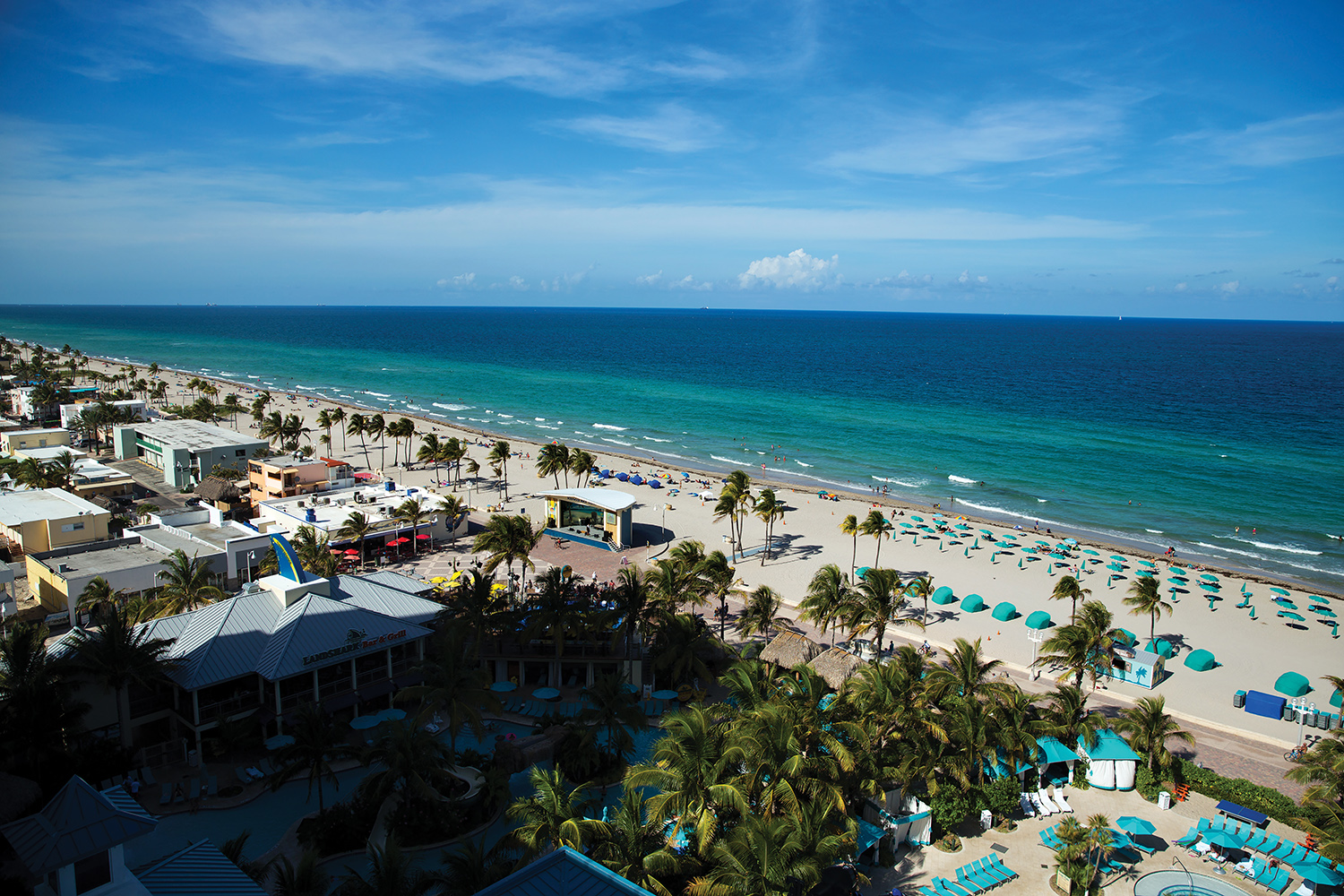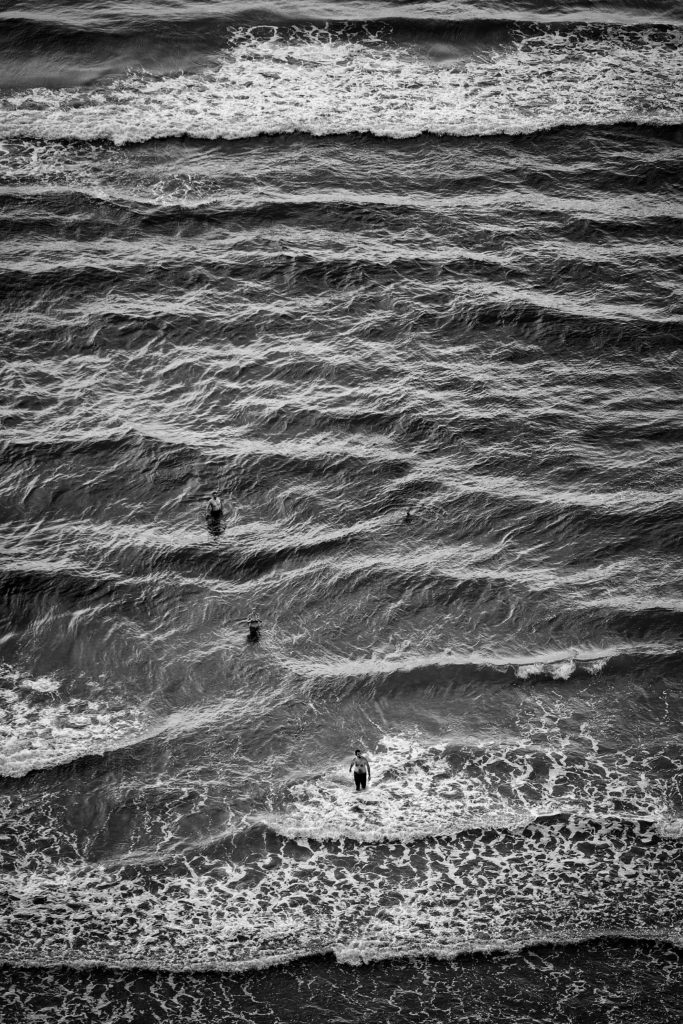By Nila Do Simon
Photography by Scott McIntyre
There’s something in the water in Hollywood Beach. And it’s percolating.
The narrow barrier island sandwiched between the Atlantic Ocean and Intracoastal Waterway is undergoing a metamorphosis that’s hard to ignore. Since the economy bounced back from the 2008 recession, Hollywood Beach has made one of Broward County’s more dramatic changes.
Unmoved by the glitz of Miami or the climbing prices of Fort Lauderdale, developers and hoteliers—including musician Jimmy Buffett with his Margaritaville Hollywood Beach Resort—have turned to Hollywood for their next adventure. Projects include a partnership between Jorge Perez of The Related Group and Sam Nazarian of sbe for the $240 million Hyde Resort and Residences and the Hyde Beach House Hollywood; The Diplomat Beach Resort, which recently underwent a $100 million makeover; and the soon-to-open $180 million condo-hotel Meliá Costa Hollywood Beach Resort.
As a beach that had its birth in the 1920s when City of Hollywood founder Joseph Young had a vision of turning sprawling farmland into a ritzy seaside escape, it stepped into the sunshine in the 1960s when Frank Sinatra and the Rat Pack made frequent stops here.
To the uninitiated, Hollywood Beach has more recently been a land of no-frills seaside motels resplendent with blaring wall-unit air conditioning, shirtless French-Canadian snowbirds sunning themselves, mom-and-pop-owned eateries, teenagers wildly steering canopied surreys along the Broadwalk and pedestrians dodging those surreys. I would know: I’ve lived here for five years.
I fell in love with the area for the same reasons everyone else does: It’s off the beaten path, completely quirky and an absolute jewel in the Sunshine State. I love telling people about the restaurant-lined, pedestrian-centric 2.5-mile-long Broadwalk, and I don’t hesitate to correct them when they mispronounce it “boardwalk.” I can’t get enough of the live music performances at the Hollywood Beach Theatre, or bandshell, where spotting men and women with questionable dance moves is part of the experience.
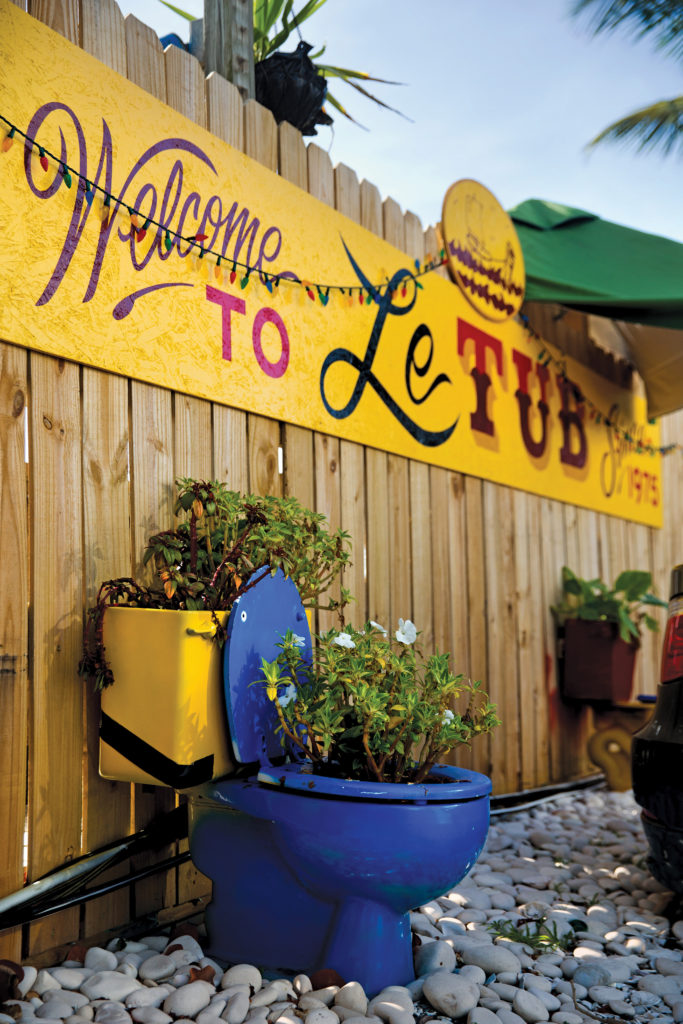
CHARACTER TRAITS: Hollywood Beach’s eclectic ambiance begets its fair share of bohemian atmospheres, including at Le Tub Saloon.
Born This Way
As of late, the beach area is undergoing a maturation process that is bringing a new, more sophisticated clientele to the nearly 5-mile-long strip of land that locals sometimes refer to as “Hollyweird.” Call it a transition into adulthood.
“I came to the beach when I was in college in the early ’80s, and at that time the Broadwalk was basically an asphalt path and the beach was pretty rundown,” says Jorge Camejo, the executive director of the Hollywood Community Redevelopment Agency, which is charged with stimulating public and private investment and upgrading the streets and landscape. “I was overwhelmed when I came back in 2011. Seeing the Broadwalk with the brick pavers, against the shoreline of the Atlantic, is so impressive. I thought there was no reason to not have this place take off.”
And it has. If you ask residents about the heart and soul of Hollywood Beach, they would say it’s the Broadwalk, a path running alongside the beach that’s flooded with pedestrians, cyclists, joggers and snowbirds on any given weekend. In 2009, the CRA invested about $14 million into upgrading it and the beach, replacing the asphalt with bright pavers, adding a concrete bike path, erecting a low coquina stone wall to separate the Broadwalk from the sand, and adding small parks with public art and water features. The new features were so enticing that in 2013, the Broadwalk was designated one of 10 Great Public Spaces by the American Planning Association, alongside New York City’s Grand Central Terminal and Los Angeles’ Grand Park.
Since then, the beach area has continued to be lifted by a rising tide of development. Beloved independent eateries such as GG’s Waterfront Bar and Grill and Billy’s Stone Crab Restaurant have also undergone much-needed face-lifts in recent years, thanks to grants by the CRA. In 2015, the 349-room Margaritaville opened, ushering in a global crowd already familiar with Buffett’s lifestyle brand.
“Redoing the Broadwalk was the catalyst for me to develop here,” says New Jersey native Lon Tabatchnick, the developer behind the $175 million resort and the luxury oceanfront condos The Villas of Positano. “I thought if the city was willing to invest in infrastructure and beautifying the beach, then it’s the right place to develop.”
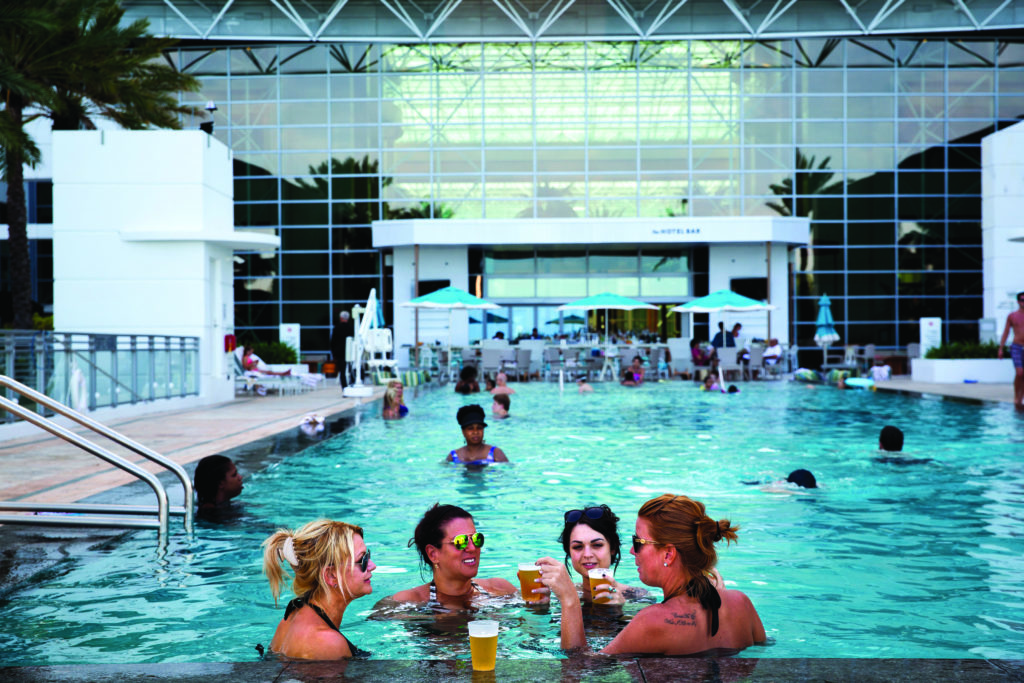
NEW AGAIN: The Diplomat Beach Resort’s recent $100 million renovation brings 10 modern culinary concepts to the property, including an indoor-outdoor poolside bar.
Tabatchnick says the idea of connecting with the Margaritaville team came from a walk on Hollywood Beach, where he could see the bright signs of the Miami Dolphins stadium when it was called Land Shark Stadium, named for Buffett’s brand. “I thought, ‘If Jimmy wants to be here in South Florida, what better place for his brand to be than in Hollywood?’” Tabatchnick says.
He approached Buffett and his team about bringing Margaritaville to Hollywood and building on the city-owned land that formerly housed a parking garage. The rest is history. Embracing a “no-worries” tropical vibe reminiscent of Buffett’s famous song, the 17-story resort showcases entertainment galore, including eight restaurants and bars, a surf simulator called the Beachfront FlowRider Double and live entertainment at the bandshell five nights a week.
“What we have brought to Hollywood Beach is a lifestyle, an experiential piece,” says Cate Farmer, the resort’s general manager. “It brings fun and energy, but in a way that’s well-suited to Hollywood. From hearing bands play at the bandshell to watching guests ride the FlowRider from the Broadwalk, I feel like we’re adding entertainment, diversity and uniqueness to the area.”
In other words, Margaritaville hasn’t usurped the quirky Hollywood vibe; it’s complemented and enhanced it. It’s that character that lured Tabatchnick to live in Hollywood permanently.
“Hollywood Beach is not South Beach,” Tabatchnick says. “We’re not a velvet-rope crowd; we’re much more family-oriented. It’s a community that fits in with the Margaritaville brand. A lot of the people here are more bohemian. We’re flip-flops-and-T-shirts kind of people.”
A Star is Reborn
Ed Walls remembers visiting Hollywood Beach in the 1980s, when he was managing a Fort Lauderdale hotel.
“I’ve always kind of liked it here,” says Walls, now the general manager of The Diplomat Beach Resort. “Hollywood Beach was a little kitschy Florida, and it still is.”
And though the area might still illicit heavy kitschy undertones, the newly renovated Diplomat is anything but. Before we can truly appreciate what The Diplomat is today, however, we need to understand its past. Built in 1958 as a playground for the wealthy, the hotel’s location made it a natural pit stop for those traversing from New York City to Miami. It was frequented by stars such as Judy Garland, Frank Sinatra and Sammy Davis Jr. Financial troubles and arson in the 1980s beset the grand dame, leading to entire floors being closed, and eventually the hotel shut its doors in 1991.
The property had its second coming in 1997 when a North American labor union purchased it. A year later, 500 pounds of dynamite was used to implode the original structure, bringing a new era to The Diplomat. Modern additions arrived, including an adjacent 209,000-square-foot convention center and a 30,000-square-foot spa. Because of its meeting space, it became largely a property for out-of-towners, save for a few special occasion dinners that locals would reserve at its steakhouse.
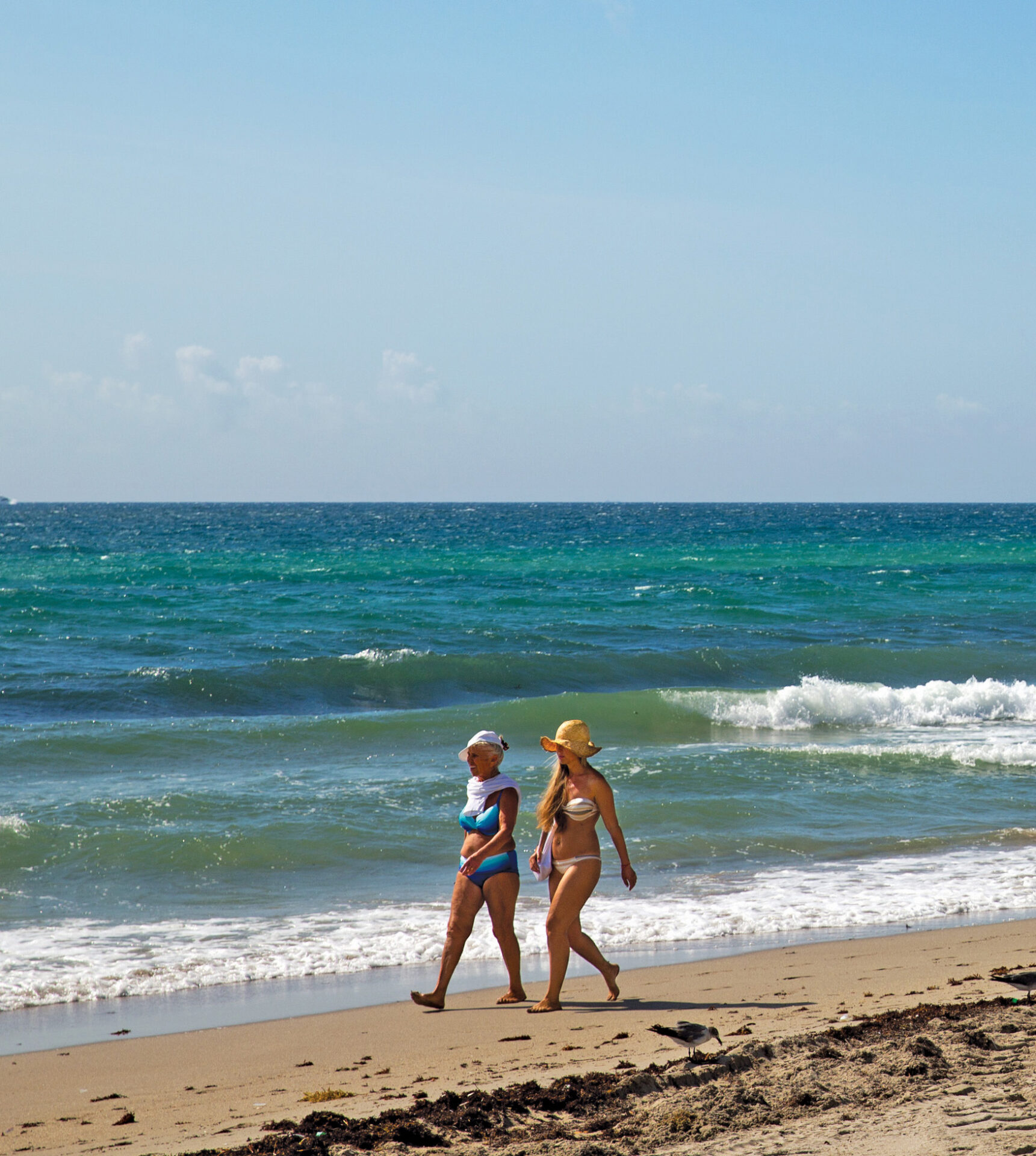
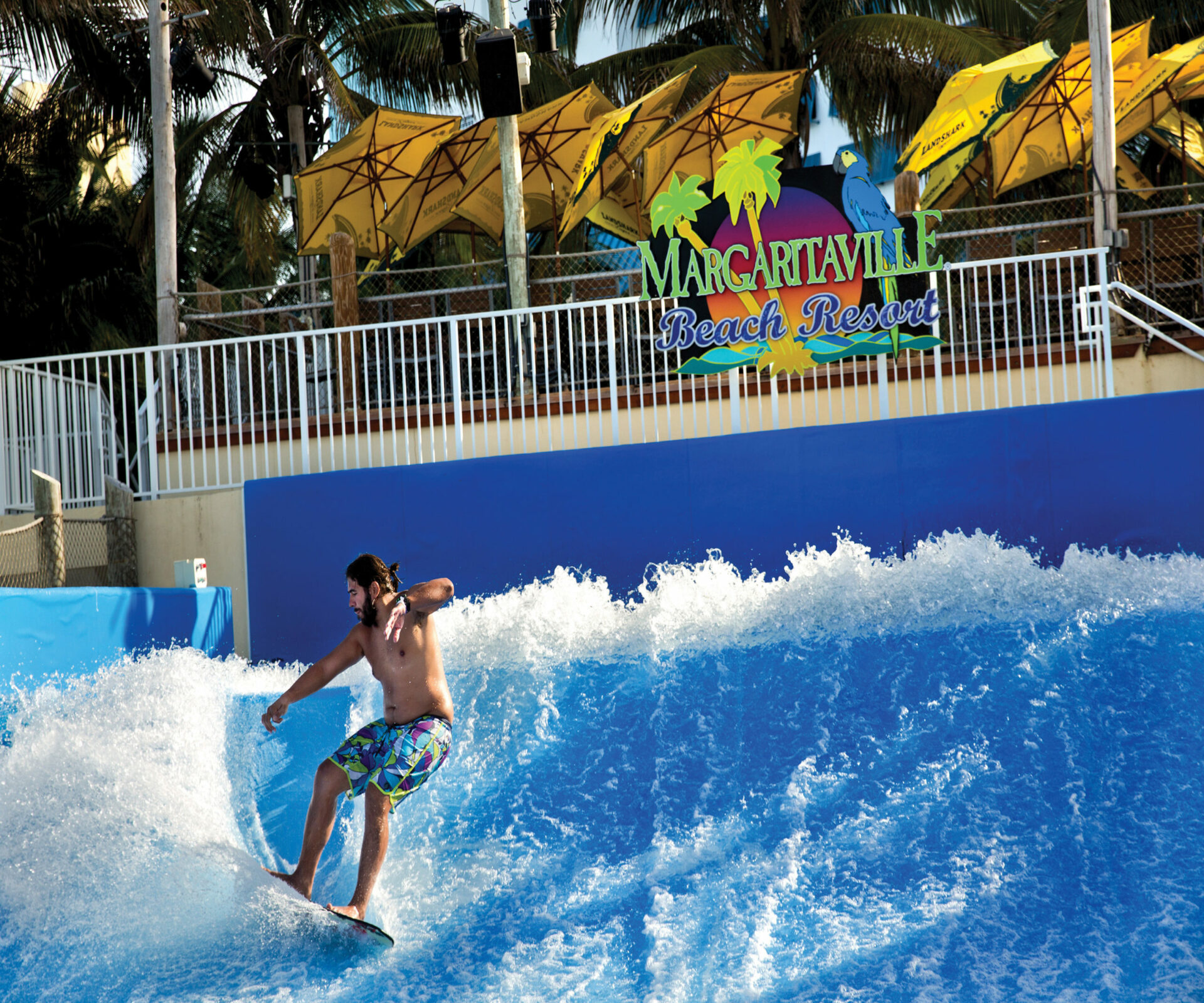
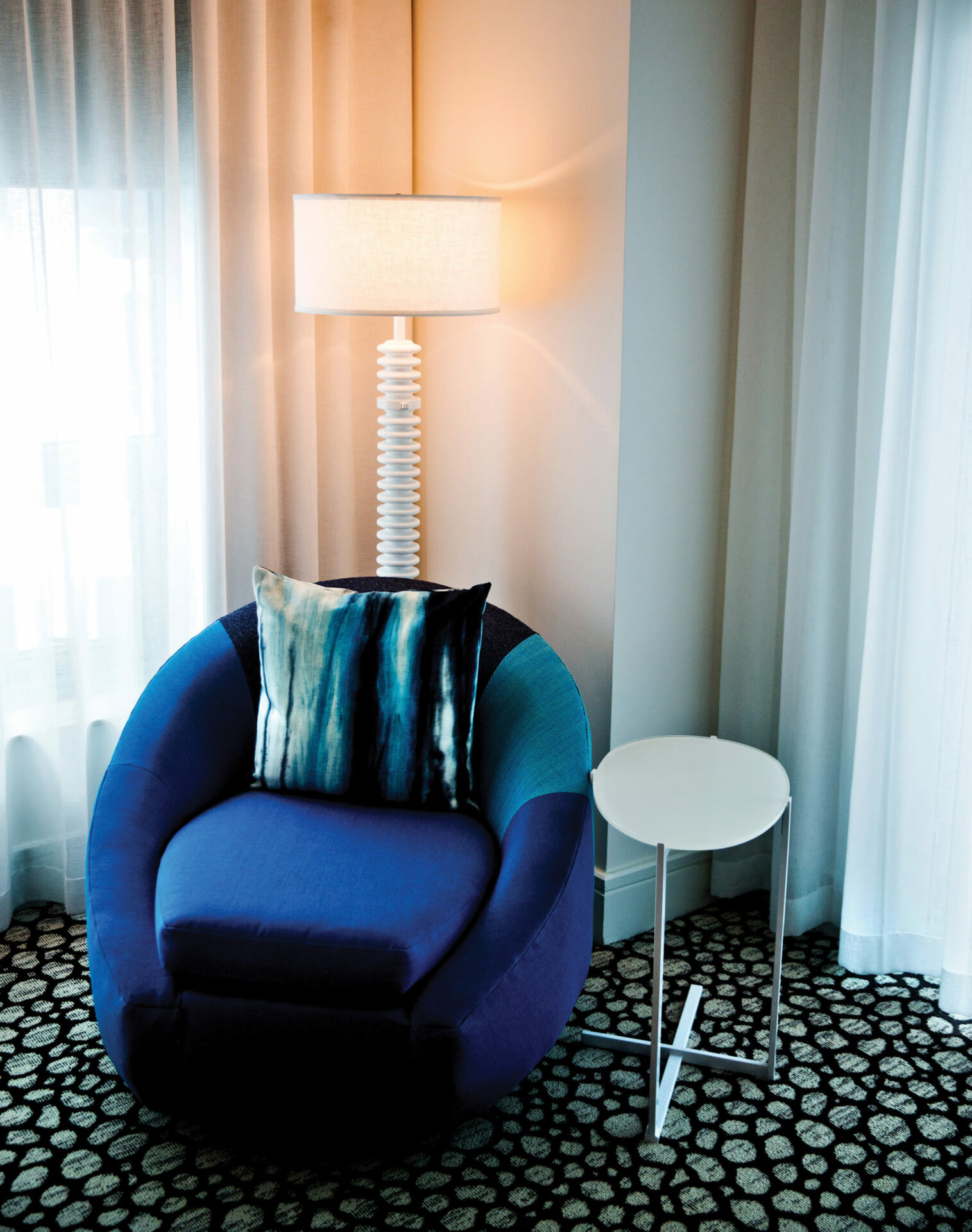


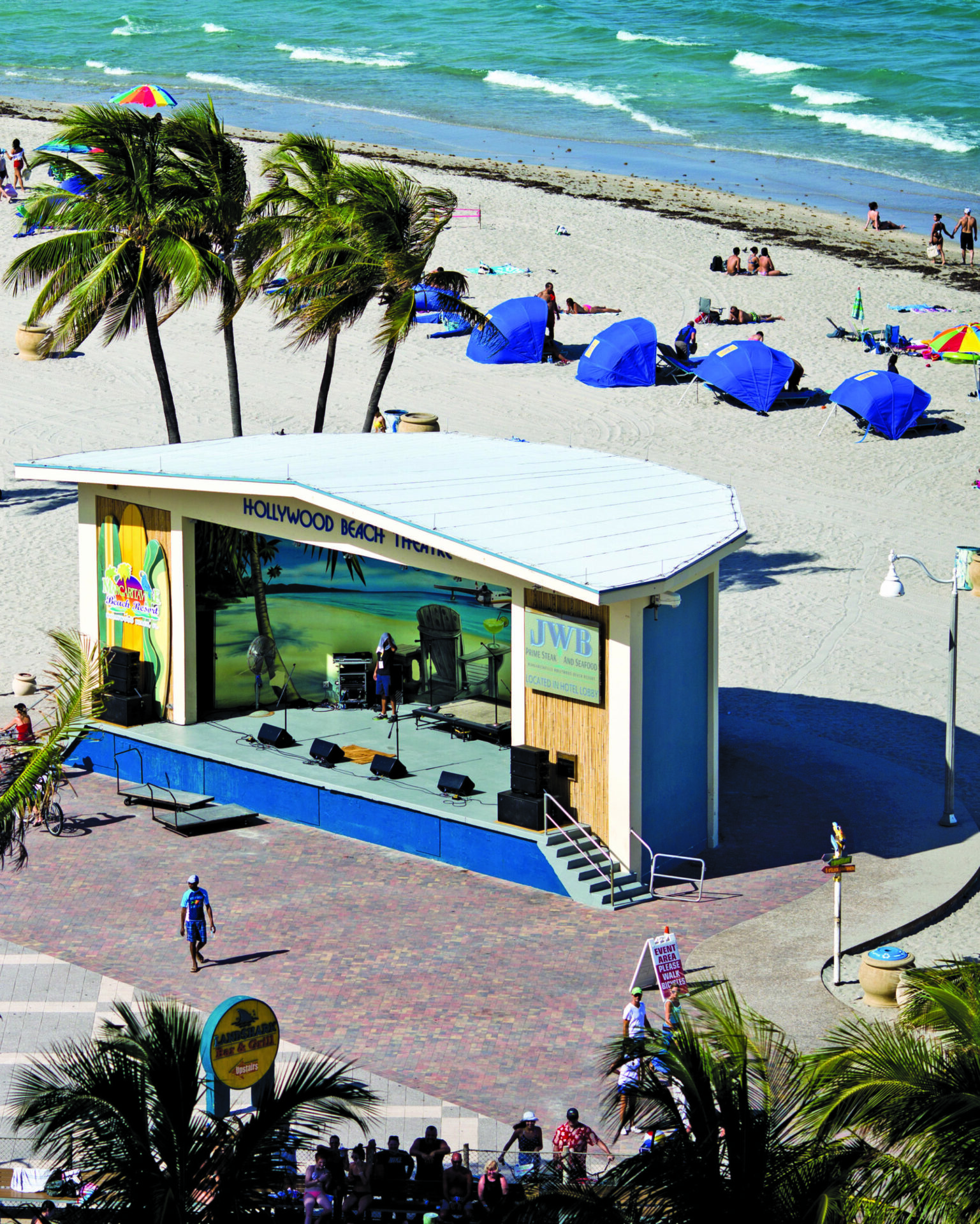
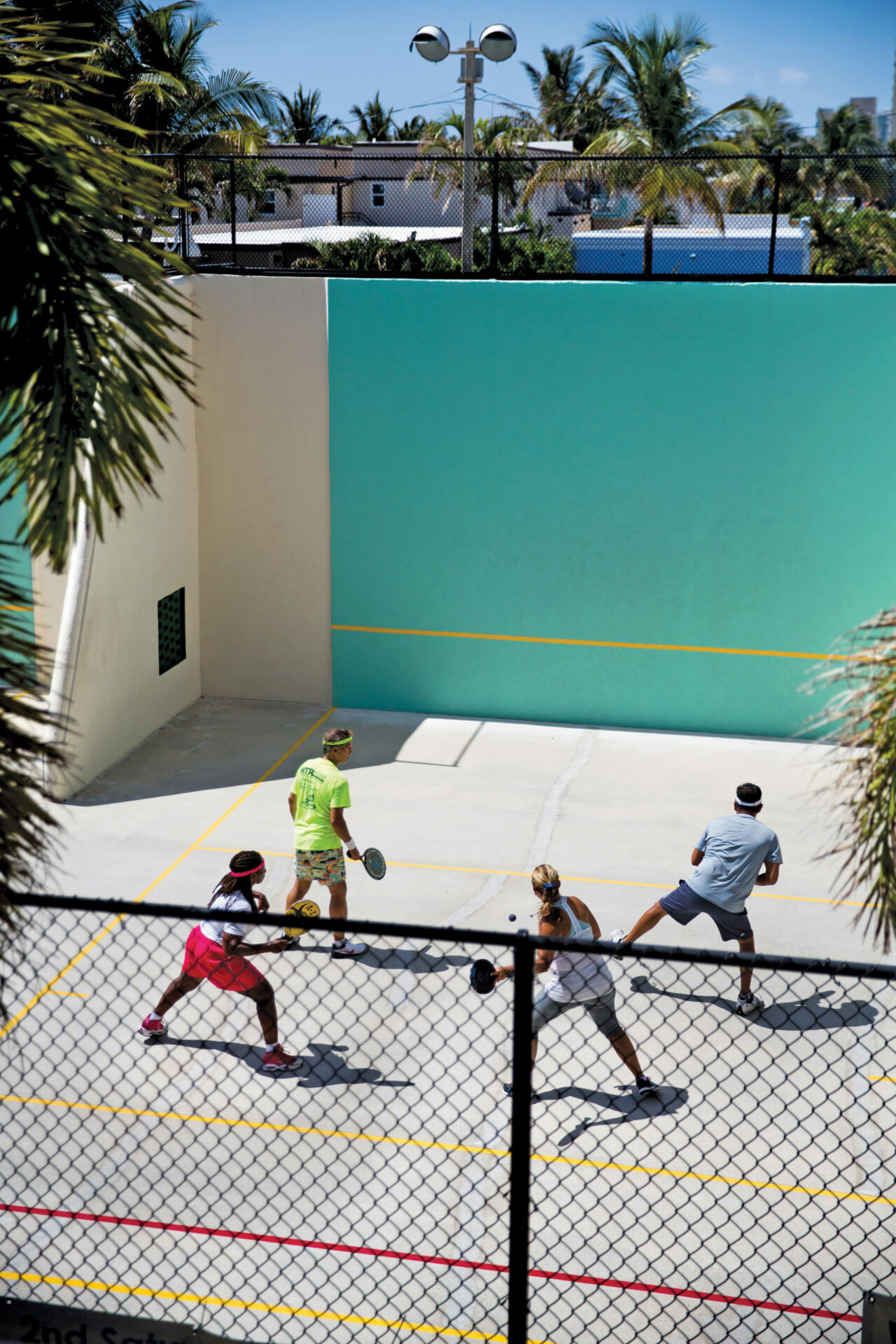
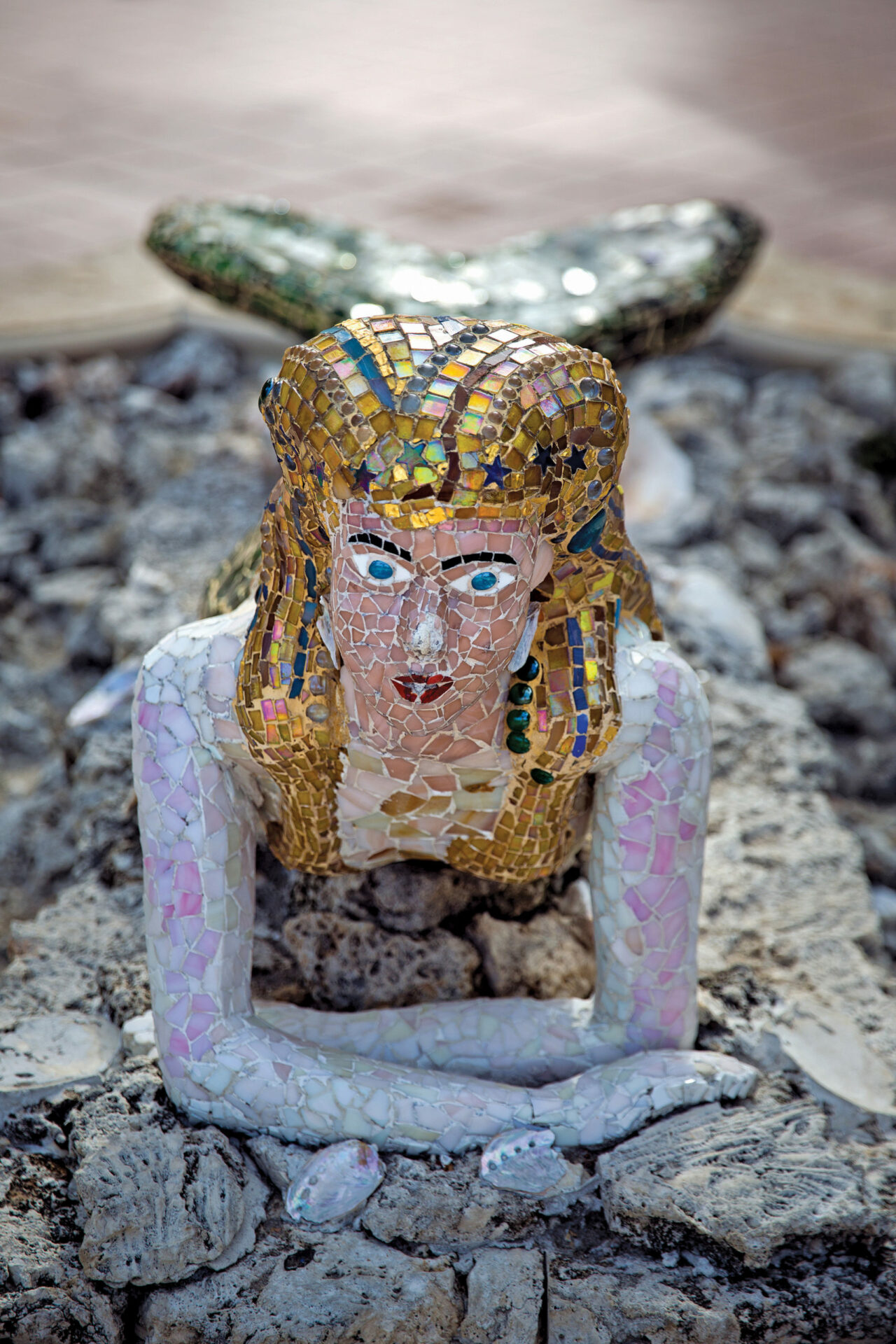
All that started to change with the hotel’s third coming. Now operating under the Hilton Worldwide brand and fresh off a major face-lift, The Diplomat is looking to bring locals back to the beach. Part of its overhaul includes adding 10 new restaurants and bars. Celebrity chef Geoffrey Zakarian of “Chopped” and “Iron Chef” fame is overseeing a restaurant and a café, and internationally recognized chef Michael Schulson is bringing his Japanese-inspired cuisine to the hotel. Schulson says it didn’t take much to convince him to open his first Florida restaurant, Monkitail, inside The Diplomat.
“We didn’t know anything about Hollywood Beach before a few years ago,” says Schulson, whose forward-thinking interactive dining concepts (think world-class cuisine in the dining area, and a bowling alley and cocktail bar in the adjacent room) have been all the rage in Philadelphia. “But we had heard of The Diplomat. If you ask anyone about The Diplomat, everybody knows it. So it was a no-brainer in that aspect to join the brand with Monkitail.”

MONKEY BUSINESS: Philadelphia-based chef Michael Schulson opened Monkitail inside The Diplomat in April. Beyond Monkitail’s main dining room is Nokku, a discreet cocktail lounge with four private rooms, each having full karaoke capabilities.
While The Diplomat is focused on present and future travelers, the hotel hasn’t forgotten about its past. Black-and-white archival photos of Hollywood Beach in the 1960s hang in its lobby, steakhouse and guest rooms. This is a feature Walls is especially proud of, as his interest in Hollywood Beach goes beyond his property. As president of the Hollywood Chamber of Commerce, Walls is heading the organization in one of its most exciting times. “I think Hollywood is kind of on fire right now,” he says.
As Hollywood Beach residents know, there’s something special about living here. There’s no other beach in South Florida quite like it, where the beach and its visitors harmoniously blend with mom-and-pop shops and hotel giants. It’s that balance of posh with kitsch that makes Hollywood Beach as distinct as the sunburn on a snowbird’s back.
“I don’t believe the future of Hollywood Beach calls for a whole bunch of Margaritaville properties,” Camejo says. “The balance is how to retain the unique character of Hollywood Beach with the motels while maintaining the catalytic character of The Diplomat and Margaritaville. We are adamant about one thing: If we don’t keep the character of the area, then we have failed.”
Now in the middle of its maturation phase, perhaps Hollywood Beach is no longer that teenager who refuses to grow up. Instead, it’s just ready for the next phase of life.
Originally appeared in the Summer 2017 Issue.


